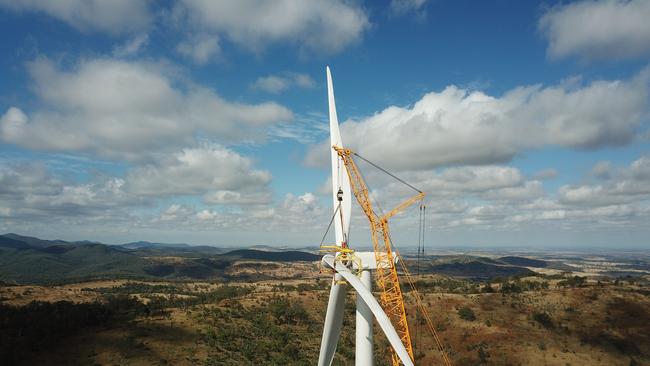Solar, wind power grow at fastest pace since 1999
Global supplies of wind and solar energy grew at their fastest rate in two decades in 2020, while rooftop solar continues to power ahead in Australia.

Global supplies of wind and solar grew at their fastest rate in two decades in 2020 and are tipped to outpace existing forecasts in the next two years.
Meanwhile installations of rooftop solar will also remain strong in Australia.
The International Energy Agency said the amount of renewable electricity capacity added in 2020 rose by 45 per cent to 280 gigawatts, the largest year-on-year increase since 1999.
That strong growth will continue to be powered by clean energy investments in Europe and the US, offsetting a China’s slowdown with 270GW of renewable capacity due to be added in 2021, along with almost 280GW in 2022.
Estimates for this year and next rose more than 25 per cent from the last predictions the IEA made in November, with governments selling off record levels of renewable capacity and corporates signing record-level power purchase agreements, shrugging off economic ructions and demand uncertainty from Covid-19.
“Wind and solar power are giving us more reasons to be optimistic about our climate goals as they break record after record. Last year the increase in renewable capacity accounted for 90 per cent of the entire global power sector’s expansion” said Fatih Birol, the IEA’s executive director.
New supplies of rooftop solar in Australia are expected to remain strong with about 4GW of small-scale solar generation to be added in both 2021 and 2022, slightly down on a strong 2020 for the sector.
“State-level incentives are prompting distributed photovoltaic growth with the rapid adoption of battery storage, especially in the residential sector,” the IEA noted.
However, it also referenced the growing pains of large-scale solar in Australia amid a oversupply of renewable energy certificates.
“Australia exceeded its large-scale renewable energy target in 2020, and the resulting oversupply of certificates negatively affected the business case for utility-scale photovoltaic projects. As a result, some developers are seeking to sign corporate power purchase agreements to ensure stable remuneration.”
Global solar PV installations will continue to break new records, with annual additions forecast to reach over 160GW by 2022, nearly 50 per cent higher than new supply in 2019, before the pandemic hit.
Wind capacity additions almost doubled last year to 114GW. Growth will ease in 2021 and 2022, but the increases will still be 50 per cent larger than the average expansion during the 2017-19 period.
Australia requires at least 30GW of solar and wind to replace coal generation by 2040 and 47GW should more aggressive pollution cuts be required in response to the climate change crisis, Australian Energy Market Operator data shows.
By 2035 nearly 90 per cent of power demand could be met by renewable generation during periods through the day. However, that will require up to 50GW of large-scale solar and wind to be added under the most aggressive plan to cut emissions, representing nearly all the current capacity of the market to be built in just two decades.
More than 40 projects totaling nearly 4,900MW completed registration or began exporting to the grid last year, according to AEMO, while a further 300 generation and storage projects totalling 55,000 MWs are proposed across the power grid.
Coal, which currently provides 70 per cent of electricity, will contribute less than a third of supply by 2040 and is now widely expected to be forced out earlier than planned retirement dates as competition from renewables and carbon constraints render plants uneconomic.





To join the conversation, please log in. Don't have an account? Register
Join the conversation, you are commenting as Logout